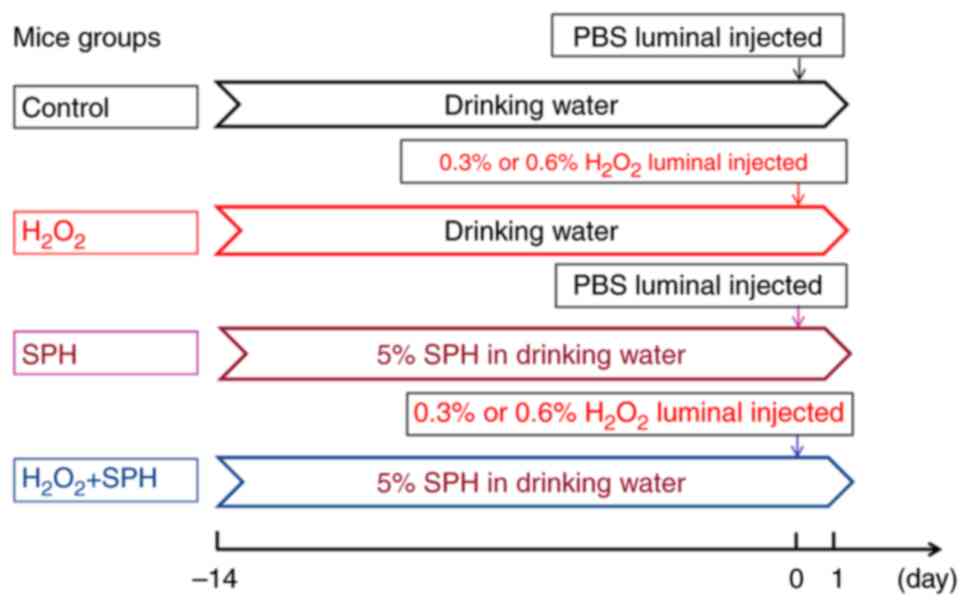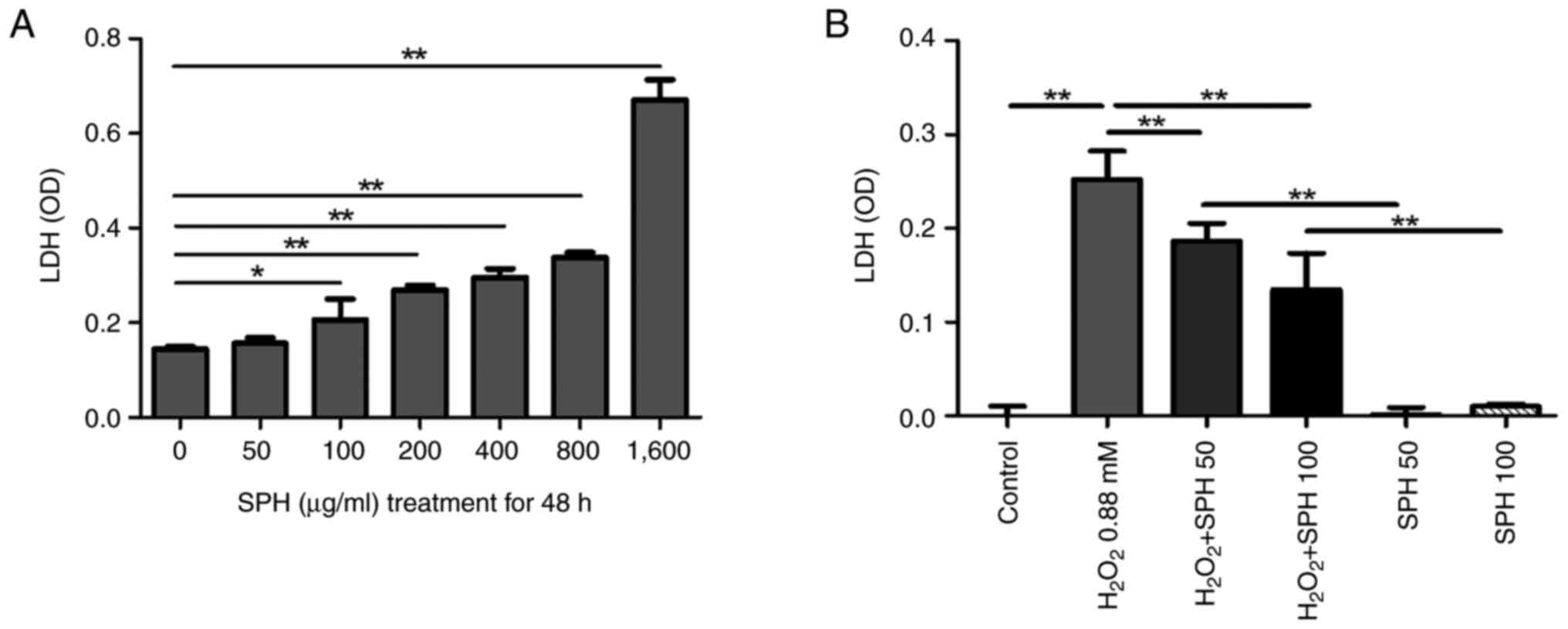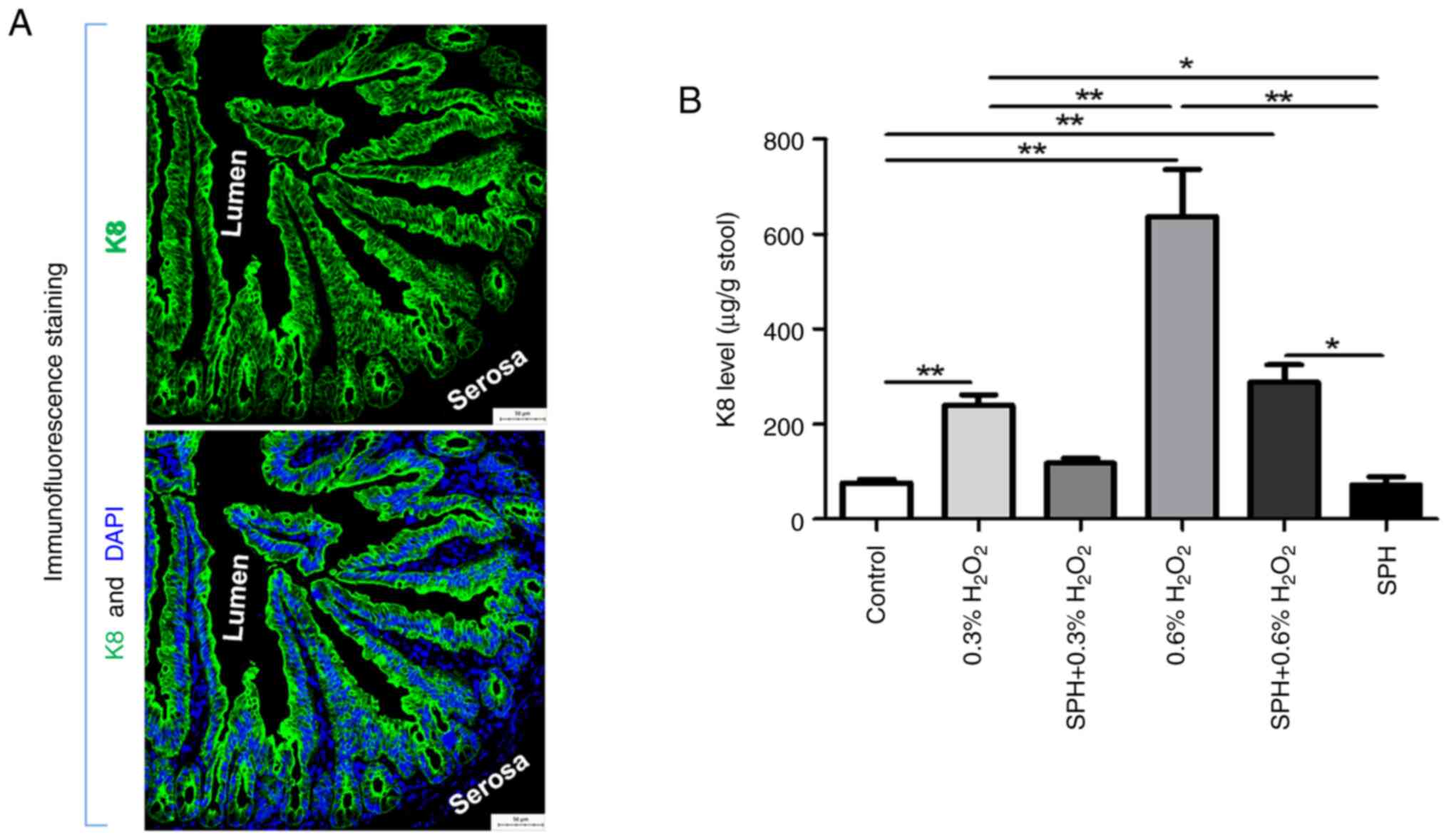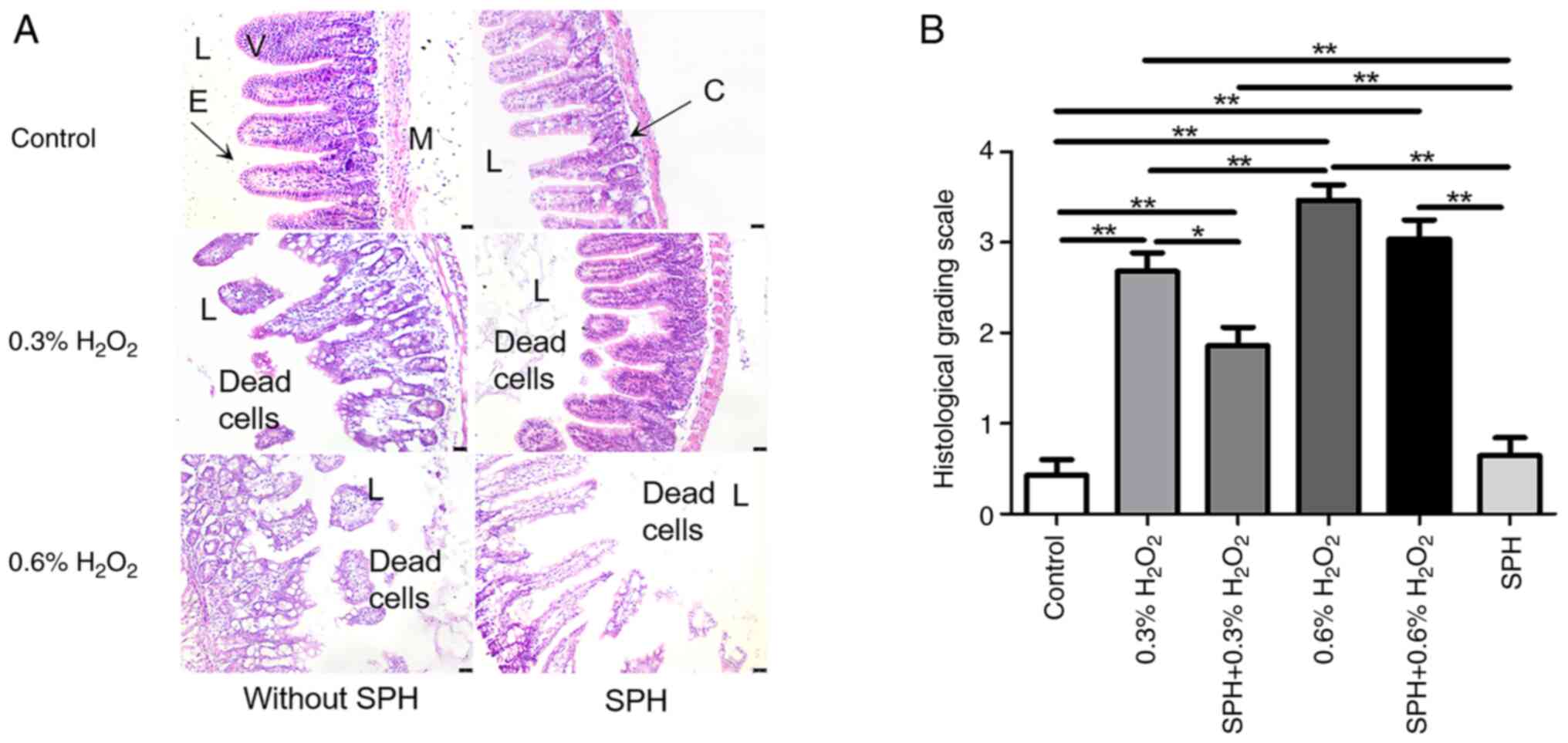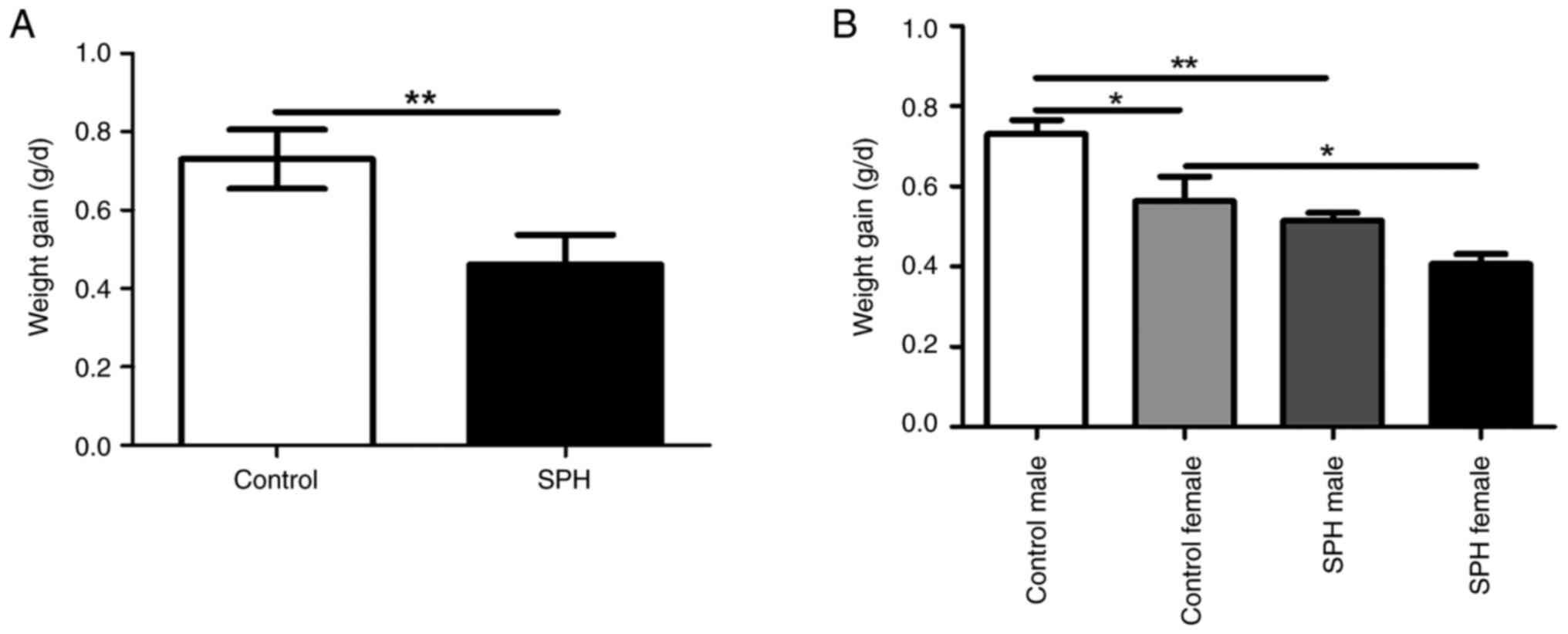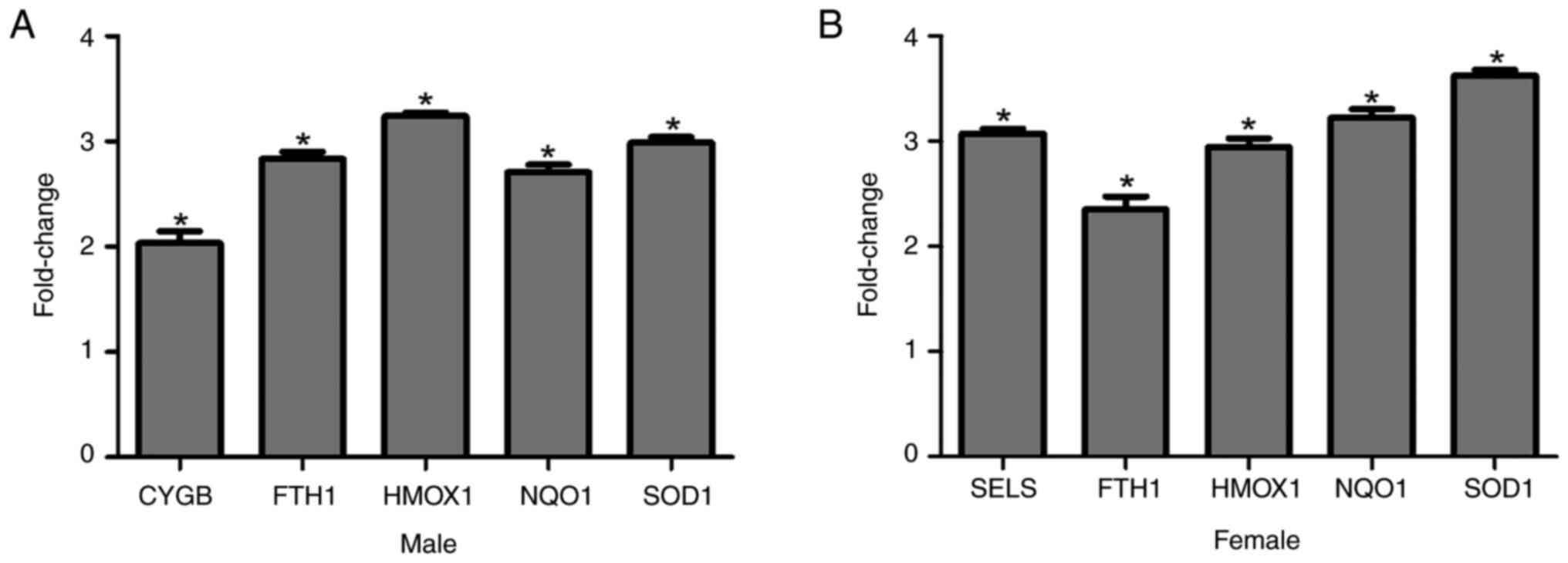|
1
|
Pizzino G, Irrera N, Cucinotta M, Pallio
G, Mannino F, Arcoraci V, Squadrito F, Altavilla D and Bitto A:
Oxidative stress: Harms and benefits for human health. Oxid Med
Cell Longev. 2017:84167632017. View Article : Google Scholar : PubMed/NCBI
|
|
2
|
Bhattacharyya A, Chattopadhyay R, Mitra S
and Crowe SE: Oxidative stress: An essential factor in the
pathogenesis of gastrointestinal mucosal diseases. Physiol Rev.
94:329–354. 2014. View Article : Google Scholar : PubMed/NCBI
|
|
3
|
Rajendran P, Nandakumar N, Rengarajan T,
Palaniswami R, Gnanadhas EN, Lakshminarasaiah U, Gopas J and
Nishigaki I: Antioxidants and human diseases. Clin Chim Acta.
436:332–347. 2014. View Article : Google Scholar : PubMed/NCBI
|
|
4
|
Valko M, Leibfritz D, Moncol J, Cronin MT,
Mazur M and Telser J: Free radicals and antioxidants in normal
physiological functions and human disease. Int J Biochem Cell Biol.
39:44–84. 2007. View Article : Google Scholar : PubMed/NCBI
|
|
5
|
Loboda A, Damulewicz M, Pyza E, Jozkowicz
A and Dulak J: Role of Nrf2/HO-1 system in development,
oxidative stress response and diseases: An evolutionarily conserved
mechanism. Cell Mol Life Sci. 73:3221–3247. 2016. View Article : Google Scholar : PubMed/NCBI
|
|
6
|
Wu Q, Zhang XS, Wang HD, Zhang X, Yu Q, Li
W, Zhou ML and Wang XL: Astaxanthin activates nuclear factor
erythroid-related factor 2 and the antioxidant responsive element
(Nrf2-ARE) pathway in the brain after subarachnoid hemorrhage in
rats and attenuates early brain injury. Mar Drugs. 12:6125–6141.
2014. View Article : Google Scholar : PubMed/NCBI
|
|
7
|
Talalay P, Dinkova-Kostova AT and
Holtzclaw WD: Importance of phase 2 gene regulation in protection
against electrophile and reactive oxygen toxicity and
carcinogenesis. Adv Enzyme Regul. 43:121–134. 2003. View Article : Google Scholar : PubMed/NCBI
|
|
8
|
Mirończuk-Chodakowska I, Witkowska AM and
Zujko ME: Endogenous non-enzymatic antioxidants in the human body.
Adv Med Sci. 63:68–78. 2018. View Article : Google Scholar : PubMed/NCBI
|
|
9
|
Kiewiet MBG, Faas MM and de Vos P:
Immunomodulatory protein hydrolysates and their application.
Nutrients. 10:9042018. View Article : Google Scholar : PubMed/NCBI
|
|
10
|
Parolini C, Vik R, Busnelli M, Bjørndal B,
Holm S, Brattelid T, Manzini S, Ganzetti GS, Dellera F, Halvorsen
B, et al: A salmon protein hydrolysate exerts lipid-independent
anti-atherosclerotic activity in ApoE-deficient mice. PLoS One.
9:e975982014. View Article : Google Scholar : PubMed/NCBI
|
|
11
|
Espe M, Holen E, He J, Provan F, Chen L,
Øysæd KB and Seliussen J: Hydrolyzed fish proteins reduced
activation of caspase-3 in H2O2 induced oxidative stressed liver
cells isolated from atlantic salmon (salmo salar). Springerplus.
4:6582015. View Article : Google Scholar : PubMed/NCBI
|
|
12
|
Idowu AT, Benjakul S, Sinthusamran S,
Sookchoo P and Kishimura H: Protein hydrolysate from salmon frames:
Production, characteristics and antioxidative activity. J Food
Biochem. 43:e127342019. View Article : Google Scholar : PubMed/NCBI
|
|
13
|
Wei J, Tao G, Xu B, Wang K, Liu J, Chen
CH, Dunn JCY, Currie C, Framroze B and Sylvester KG: Soluble
protein hydrolysate ameliorates gastrointestinal inflammation and
injury in 2,4,6-trinitrobenzene sulfonic acid-induced colitis in
mice. Biomolecules. 12:12872022. View Article : Google Scholar : PubMed/NCBI
|
|
14
|
National Research Council (US) Committee
for the Update of the Guide for the Care and Use of Laboratory
Animals, . Guide for the Care and Use of Laboratory Animals. 8th
Edition. National Academies Press; Washington, DC: 2011
|
|
15
|
McElroy SJ, Castle SL, Bernard JK,
Almohazey D, Hunter CJ, Bell BA, Al Alam D, Wang L, Ford HR and
Frey MR: The ErbB4 ligand neuregulin-4 protects against
experimental necrotizing enterocolitis. Am J Pathol. 184:2768–2778.
2014. View Article : Google Scholar : PubMed/NCBI
|
|
16
|
Wang K, Tao G, Sun Z, Wei J, Liu J, Taylor
J, Gibson M, Mostaghimi M, Good M and Sylvester KG: Fecal keratin 8
is a noninvasive and specific marker for intestinal injury in
necrotizing enterocolitis. J Immunol Res. 2023:53566462023.
View Article : Google Scholar : PubMed/NCBI
|
|
17
|
Livak KJ and Schmittgen TD: Analysis of
relative gene expression data using real-time quantitative PCR and
the 2(−delta delta C(T)) method. Methods. 25:402–408. 2001.
View Article : Google Scholar : PubMed/NCBI
|
|
18
|
Imam MU, Zhang S, Ma J, Wang H and Wang F:
Antioxidants mediate both iron homeostasis and oxidative stress.
Nutrients. 9:6712017. View Article : Google Scholar : PubMed/NCBI
|
|
19
|
Orino K, Lehman L, Tsuji Y, Ayaki H, Torti
SV and Torti FM: Ferritin and the response to oxidative stress.
Biochem J. 357:241–247. 2001. View Article : Google Scholar : PubMed/NCBI
|
|
20
|
Wang CY and Chau LY: Heme oxygenase-1 in
cardiovascular diseases: Molecular mechanisms and clinical
perspectives. Chang Gung Med J. 33:13–24. 2010.PubMed/NCBI
|
|
21
|
Correa-Costa M, Amano MT and Câmara NO:
Cytoprotection behind heme oxygenase-1 in renal diseases. World J
Nephrol. 1:4–11. 2012. View Article : Google Scholar : PubMed/NCBI
|
|
22
|
Naito Y, Takagi T, Uchiyama K and
Yoshikawa T: Heme oxygenase-1: A novel therapeutic target for
gastrointestinal diseases. J Clin Biochem Nutr. 48:126–133. 2011.
View Article : Google Scholar : PubMed/NCBI
|
|
23
|
Chang M, Xue J, Sharma V and Habtezion A:
Protective role of hemeoxygenase-1 in gastrointestinal diseases.
Cell Mol Life Sci. 72:1161–1173. 2015. View Article : Google Scholar : PubMed/NCBI
|
|
24
|
Schulz S, Wong RJ, Jang KY, Kalish F,
Chisholm KM, Zhao H, Vreman HJ, Sylvester KG and Stevenson DK: Heme
oxygenase-1 deficiency promotes the development of necrotizing
enterocolitis-like intestinal injury in a newborn mouse model. Am J
Physiol Gastrointest Liver Physiol. 304:G991–G1001. 2013.
View Article : Google Scholar : PubMed/NCBI
|
|
25
|
Schulz S, Chisholm KM, Zhao H, Kalish F,
Yang Y, Wong RJ and Stevenson DK: Heme oxygenase-1 confers
protection and alters T-cell populations in a mouse model of
neonatal intestinal inflammation. Pediatr Res. 77:640–648. 2015.
View Article : Google Scholar : PubMed/NCBI
|
|
26
|
Eisenstein RS, Garcia-Mayol D, Pettingell
W and Munro HN: Regulation of ferritin and heme oxygenase synthesis
in rat fibroblasts by different forms of iron. Proc Natl Acad Sci
USA. 88:688–692. 1991. View Article : Google Scholar : PubMed/NCBI
|
|
27
|
Cheng HT, Yen CJ, Chang CC, Huang KT, Chen
KH, Zhang RY, Lee PY, Miaw SC, Huang JW, Chiang CK, et al: Ferritin
heavy chain mediates the protective effect of heme oxygenase-1
against oxidative stress. Biochim Biophys Acta. 1850:2506–2517.
2015. View Article : Google Scholar : PubMed/NCBI
|
|
28
|
Chen H, Tang X, Zhou B, Zhou Z, Xu N and
Wang Y: A ROS-mediated mitochondrial pathway and Nrf2
pathway activation are involved in BDE-47 induced apoptosis in
Neuro-2a cells. Chemosphere. 184:679–686. 2017. View Article : Google Scholar : PubMed/NCBI
|
|
29
|
Hu YR, Ma H, Zou ZY, He K, Xiao YB, Wang
Y, Feng M, Ye XL and Li XG: Activation of Akt and
JNK/Nrf2/NQO1 pathway contributes to the protective
effect of coptisine against AAPH-induced oxidative stress. Biomed
Pharmacother. 85:313–322. 2017. View Article : Google Scholar : PubMed/NCBI
|
|
30
|
Hu XM, Wang YM, Zhao YQ, Chi CF and Wang
B: Antioxidant peptides from the protein hydrolysate of monkfish
(LOPHIUS LITULON) muscle: Purification, identification, and
cytoprotective function on HepG2 cells damage by
H2O2. Mar Drugs. 18:1532020. View Article : Google Scholar : PubMed/NCBI
|
|
31
|
Zhao Y, Li H, Men LL, Huang RC, Zhou HC,
Xing Q, Yao JJ, Shi CH and Du JL: Effects of selenoprotein S on
oxidative injury in human endothelial cells. J Transl Med.
11:2872013. View Article : Google Scholar : PubMed/NCBI
|
|
32
|
Ye Y, Fu F, Li X, Yang J and Liu H:
Selenoprotein S is highly expressed in the blood vessels and
prevents vascular smooth muscle cells from apoptosis. J Cell
Biochem. 117:106–117. 2016. View Article : Google Scholar : PubMed/NCBI
|
|
33
|
Li X, Chen M, Yang Z, Wang W, Lin H and Xu
S: Selenoprotein S silencing triggers mouse hepatoma cells
apoptosis and necrosis involving in intracellular calcium imbalance
and ROS-mPTP-ATP. Biochim Biophys Acta Gen Subj. 1862:2113–2123.
2018. View Article : Google Scholar : PubMed/NCBI
|
|
34
|
Okina Y, Sato-Matsubara M, Matsubara T,
Daikoku A, Longato L, Rombouts K, Thanh Thuy LT, Ichikawa H,
Minamiyama Y, Kadota M, et al: TGF-β1-driven reduction of
cytoglobin leads to oxidative DNA damage in stellate cells during
non-alcoholic steatohepatitis. J Hepatol. 73:882–895. 2020.
View Article : Google Scholar : PubMed/NCBI
|
|
35
|
Lv Y, Wang Q, Diao Y and Xu R: Cytoglobin:
A novel potential gene medicine for fibrosis and cancer therapy.
Curr Gene Ther. 8:287–294. 2008. View Article : Google Scholar : PubMed/NCBI
|
|
36
|
Yu C and Xiao JH: The Keap1-Nrf2 system: A
mediator between oxidative stress and aging. Oxid Med Cell Longev.
2021:66354602021. View Article : Google Scholar : PubMed/NCBI
|
|
37
|
Chevrier G, Mitchell PL, Rioux LE, Hasan
F, Jin T, Roblet CR, Doyen A, Pilon G, St-Pierre P, Lavigne C, et
al: Low-molecular-weight peptides from salmon protein prevent
obesity-linked glucose intolerance, inflammation, and dyslipidemia
in LDLR-/-/ApoB100/100 mice. J Nutr. 145:1415–1422. 2015.
View Article : Google Scholar : PubMed/NCBI
|



